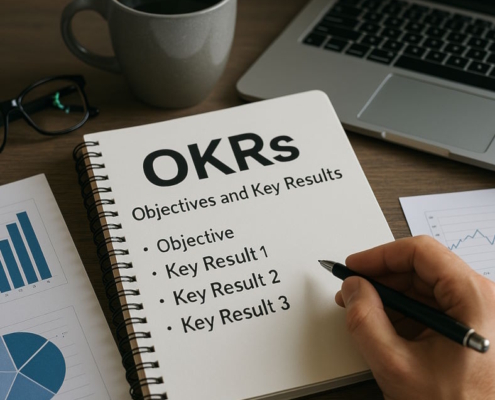Capital Contributions in General Partnerships
Capital contributions can take various forms, including cash, property, or services. These contributions are vital for the partnership’s operations, helping it acquire assets, pay debts, or invest in business growth. In most cases, the requirements for contributions are outlined in the partnership agreement. This document serves as the roadmap for the partnership and typically specifies:
- Amount of Contribution: The agreement may define a fixed amount each partner must contribute or provide a proportional formula based on ownership or profit-sharing arrangements.
- Form of Contribution: Contributions may be in the form of cash, physical assets (e.g., equipment or real estate), intellectual property, or even services rendered.
- Timing of Contribution: The agreement might specify whether contributions are required upfront, on a schedule, or in response to specific financial needs (e.g., capital calls).
If no partnership agreement exists, the rules governing capital contributions default to the laws of the jurisdiction, such as the Uniform Partnership Act (UPA) or its Revised Uniform Partnership Act (RUPA) versions, widely adopted across the United States.
Are General Partners Required to Contribute a Specific Amount of Money?
There is no universal legal requirement mandating general partners to contribute a specific amount of capital. The obligation arises from the partnership agreement or, in its absence, the applicable partnership laws.
Partnership Agreements as the Primary Determinant
A well-drafted partnership agreement is crucial to clarifying capital contribution requirements. Partners often negotiate terms that align with their goals, responsibilities, and financial capacities. For example:
- In some partnerships, partners may agree to equal contributions.
- In others, contributions may vary based on expected levels of involvement or ownership percentages.
The agreement also defines remedies and penalties for a partner’s failure to meet their obligations, reducing the likelihood of disputes.
Default Rules in the Absence of an Agreement
If the partnership lacks a formal agreement, default rules under state law apply. Under the UPA or RUPA, partners share profits, losses, and liabilities equally, regardless of their individual contributions. While these laws do not require specific contributions, they do create an implicit expectation that all partners participate equitably in the business.
What Happens if a General Partner Fails to Meet Capital Contribution Obligations?
When a general partner fails to fulfill their capital contribution obligation, the repercussions can range from contractual disputes to dissolution of the partnership. The specific consequences depend on the partnership agreement’s terms or the applicable laws governing the partnership.
1. Breach of Contract
If a partnership agreement explicitly requires a partner to contribute a certain amount, failure to do so constitutes a breach of contract. In such cases, the partnership or other partners can take legal action, such as:
- Specific Performance: Seeking a court order compelling the partner to fulfill their contribution.
- Damages: Demanding monetary compensation for losses caused by the default.
Contractual breaches can strain relationships among partners and, in some cases, lead to litigation or arbitration.
2. Adjustment of Ownership Interest
Some partnership agreements include clauses that adjust a partner’s ownership interest or profit-sharing ratio if they fail to meet their contribution obligations. For example:
- If a partner contributes less than agreed, their percentage of ownership in the partnership may be reduced proportionally.
- In extreme cases, a defaulting partner may lose voting rights or other privileges.
These adjustments aim to protect the partnership’s financial health and ensure fairness among compliant partners.
3. Expulsion or Exclusion
Many partnership agreements include provisions for the expulsion of a partner who defaults on their obligations. The agreement may outline specific grounds for expulsion, such as nonpayment of contributions, and the process for removing the partner.
Expulsion, while a potential remedy, can be contentious and lead to further disputes. It also raises the issue of compensating the expelled partner for their existing ownership interest.
4. Personal Liability
General partners are personally liable for the debts and obligations of the partnership. A failure to contribute capital does not absolve a partner of this liability. For instance, creditors may pursue the defaulting partner for the partnership’s debts, regardless of their unfulfilled contribution.
5. Dissolution of the Partnership
In extreme cases, a partner’s failure to meet capital contribution obligations can lead to the partnership’s dissolution. This occurs when the shortfall prevents the business from operating effectively, leaving no choice but to liquidate assets, pay off debts, and distribute remaining funds among the partners.
Remedies for Addressing Capital Contribution Defaults
Partnerships can employ various strategies to address a partner’s failure to contribute capital. These remedies may involve negotiation, legal enforcement, or restructuring of the partnership.
1. Negotiation and Amendment
Partners may renegotiate the terms of the partnership agreement to resolve disputes over contributions. For example:
- The defaulting partner might be allowed to make contributions in installments.
- Alternative forms of contributions, such as services or assets, might be accepted.
Renegotiation preserves the partnership and avoids costly legal action.
2. Legal Action
If renegotiation fails, the partnership can pursue legal remedies against the defaulting partner. Depending on the agreement’s terms, this may involve seeking specific performance or damages through litigation or arbitration.
3. Capital Calls
Partnership agreements often include capital call provisions, requiring all partners to contribute additional funds when needed. If a partner fails to meet a capital call, they may face penalties such as reduced ownership or voting rights.
4. Third-Party Mediation
Engaging a neutral mediator can help partners resolve disputes without resorting to litigation. Mediation fosters collaboration and helps preserve professional relationships.
5. Dissolution and Winding Up
As a last resort, the partnership may dissolve if a partner’s default makes it impossible to continue operations. Dissolution involves liquidating assets, paying debts, and distributing remaining funds among the partners.
Best Practices for Avoiding Capital Contribution Disputes
To minimize the risk of disputes related to capital contributions, partnerships should adopt proactive measures:
1. Draft Comprehensive Partnership Agreements
A clear and comprehensive partnership agreement is essential. It should address:
- The amount, form, and timing of contributions.
- Remedies for non-compliance, such as interest penalties, ownership adjustments, or expulsion.
- Dispute resolution mechanisms, such as mediation or arbitration.
2. Maintain Open Communication
Regular communication among partners fosters trust and transparency. Partners should hold periodic meetings to review financial performance and address potential issues before they escalate.
3. Use Escrow Accounts
Escrow accounts can hold initial capital contributions until all partners fulfill their obligations. This ensures the partnership has adequate funding from the outset.
4. Implement Penalty Provisions
Penalty provisions, such as interest charges for late contributions, create incentives for partners to meet their obligations on time.
Conclusion
While general partners are not automatically required to contribute a specific amount of capital, such obligations often arise from partnership agreements or default laws. Failure to meet these obligations can lead to serious consequences, including breach of contract, ownership adjustments, expulsion, or even dissolution of the partnership.
By establishing clear agreements, fostering open communication, and implementing remedies for non-compliance, partnerships can mitigate the risks associated with capital contribution defaults. These proactive measures ensure that the partnership remains financially stable and equitable, allowing partners to focus on achieving their shared business goals.






























